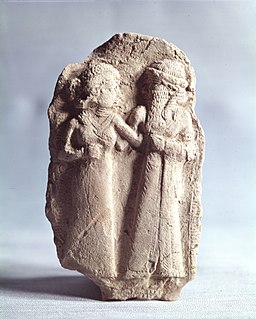 W
WDumuzid later known by the alternative form Tammuz, is an ancient Mesopotamian god associated with shepherds, who was also the primary consort of the goddess Inanna. In Sumerian mythology, Dumuzid's sister was Geshtinanna, the goddess of agriculture, fertility, and dream interpretation. In the Sumerian King List, Dumuzid is listed as an antediluvian king of the city of Bad-tibira and also an early king of the city of Uruk.
 W
WHayagriva, also spelt Hayagreeva, is a horse-headed avatar of the Lord Vishnu in Hinduism.
 W
WIn Tibetan and Japanese Buddhism, Hayagrīva is an important deity who originated as a yaksha attendant of Avalokiteśvara or Guanyin Bodhisattva in India. Appearing in the Vedas as two separate deities, he was assimilated into the ritual worship of early Buddhism and eventually was identified as a Wisdom King in Vajrayana Buddhism.
 W
WHermes is an Olympian deity in ancient Greek religion and mythology. Hermes is considered the herald of the gods. He is also considered the protector of human heralds, travellers, thieves, merchants, and orators. He is able to move quickly and freely between the worlds of the mortal and the divine, aided by his winged sandals. Hermes plays the role of the psychopomp or "soul guide" — a conductor of souls into the afterlife.
 W
WMitra is the name of an Indo-Iranian divinity from which the names and some characteristics of Rigvedic Mitrá and Avestan Mithra derive.
 W
WIn ancient Greek religion and mythology, Pan is the god of the wild, shepherds and flocks, nature of mountain wilds, rustic music and impromptus, and companion of the nymphs. He has the hindquarters, legs, and horns of a goat, in the same manner as a faun or satyr. With his homeland in rustic Arcadia, he is also recognized as the god of fields, groves, wooded glens and often affiliated with sex; because of this, Pan is connected to fertility and the season of spring. The word panic ultimately derives from the god's name.
 W
WVeles, also known as Volos, is a major Slavic god of earth, waters, and the underworld. His attributes are wet, wooly, hairy (bearded), dark and he is associated with cattle, the harvest, wealth, music, magic, and trickery. According to reconstruction by some researchers, he is the opponent of the supreme thunder god Perun. As such he probably has been imagined as a dragon, which in the belief of the pagan Slavs is a chimeric being, a serpent with a bear's head and drooping hairy ears. His tree is the willow much like Perun's tree is the oak. No direct accounts survive, but reconstructionists speculate that he may directly continue aspects of the Proto-Indo-European pantheon.